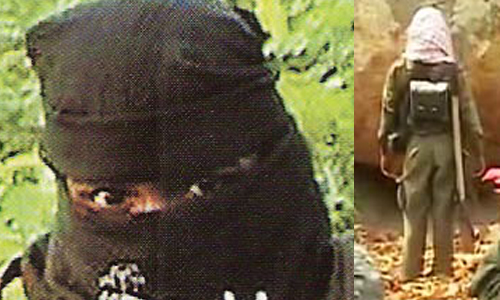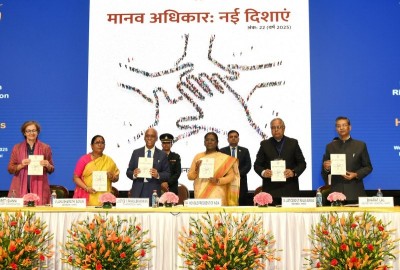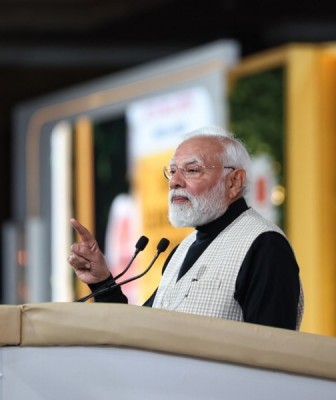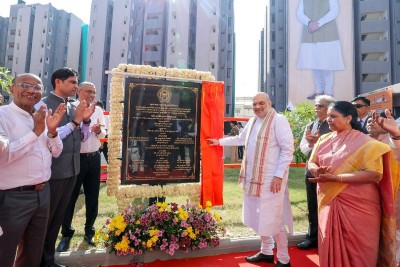
Odisha: Maoists - Hanging on a Thread
On June 22, 2014, a civilian, identified as Ashis Saunta, was killed by about 15 CPI-Maoist cadres, branding him as a 'Police informer', in the Semiliguda Block of Koraput District. Saunta's family claimed he was targeted as he had motivated the people of the village to vote during the recently concluded State Assembly and Lok Sabha(Lower House of Indian Parliament), elections defying the Maoist poll boycott call. The Srikakulam-Koraput 'divisional committee' of the CPI-Maoist claimed responsibility of the murder.
Earlier, on May 12, 2014, the Maoists had killed two local tribal leaders, identified as Taudu Pateli, a former sarpanch (head of panchayat, village level local self-government institution) and Baladaboi Simalu of Talagoluru village under the Pottangi Police Station limits in Koraput District, alleging that they were Police informers. They were among four persons abducted by the Maoists on May 11, 2014. The two other abducted persons, included a sitting sarpanch Baladaboi Pati and Taudu Pateli's wife, were released later. The Srikakulam-Koraput 'divisional committee', again, claimed responsibility for the double murder.
According to partial data compiled by the South Asia Terrorism Portal (SATP) database, 18 civilians and eight Maoists have been killed in the State in 2014, till July 13. Significantly, Security Force (SF) personnel have not suffered any fatalities in this period in 2014.
Significantly, the number of civilians killed by the Maoists in first six months of 2014 (till June 30), was 17, more than double the figure for the first six months of 2013 (8). Civilian killing in the first six months of 2012 stood at 17, and in 2011 at 13. In 2014, of the 18 civilians killed, 12 were accused by the Maoists to be 'Police informers.' Similarly, in 2013 and 2012, 17 and 21 civilians, out of 22 and 27 killed, respectively, were similarly accused by the Maoists as 'Police informers'. Union Ministry of Home Affairs (UMHA) data confirms this trend.
The first six months of 2013 and 2012 saw one and 12 SF troopers killed in the State, respectively. However, there has not been a single SF fatality so far in 2014. However, the SFs have engaged cadres of the CPI-Maoist on at least 14 occasions, and the Peoples Liberation Front of India (PLFI) once, in 2014. Of these 15 encounters, six resulted in fatalities on the extremists' side. The eight Left-Wing Extremist (LWE) fatalities (seven CPI-Maoist and one PLFI) in the first six months of 2014 exceed those in the corresponding period in the previous two years.
The geographical spread of CPI-Maoist violence in Odisha has substantially been contained within Koraput and Malkangiri Districts, as was the case in previous years. Of the 18 civilians killed by the Maoists in 2014, thus far, 17 were killed in Koraput and Malkangiri Districts, while one was killed in Rayagada, neighbouring Koraput.
The State recorded one major incident (resulting in at least three fatalities) in Malkangiri District, on April 27, 2014. No such incident was registered in the first six months of 2013, while two occurred in this period in 2012.
Five incidents of arson, two abductions and two blasts were recorded in the State in this period. In the corresponding time in 2013, the figures were two, zero and zero, respectively. In the same period in 2012, the Maoists had engineered 12 incidents of arson, one abduction and six explosions.
33 arrests and 49 surrenders were recorded in the first half of 2014, as against the 2013 total of an unusually high 1,787 surrenders, as a result of the en massecapitulation by cadres and supporters of the Narayanpatna-based Chasi Mulia Adivasi Sangh (CMAS), a CPI-Maoist front. Meanwhile, on July 2, 2014, eight CPI-Maoist cadres surrendered before the Police in Koraput. They had joined CMAS in 2009 and had later graduated to the CPI-Maoist.
Interestingly, a week after CMAS leader Nachika Linga announced and then called off his scheduled surrender the Maoists described his move as 'drama' and, on March 16, 2014, urged the tribals to disown his plan of joining electoral politics. In a signed two-page letter written in Odia, Daya and Aruna, 'secretaries' of the Srikakulam-Koraput 'divisional committee' and the 'Narayanpatna 'area committee' of the CPI-Maoist, respectively, declared,
During 2012 panchayat polls, school and mass education Minister Rabi Nanda, Koraput Member of Parliament (MP) Jayram Pangi, Member of Legislative Assembly (MLA) Jhina Hikaka and Raghuram Padal had signed on a 10-point charter of demands. But Biju Janata Dal (BJD) has not fulfilled any of the demands. In next poll, Nachika has demanded BJD ticket for Laxmipur. He has weakened the agitation by telling people that they would get facilities by going the electoral way. Without caring for people's problems, Nachika has demanded withdrawal of cases against him.
In another development, Sabyasachi Panda, the 'chief' of the Odisha Maobadi Party(OMP), who broke away from the CPI-Maoist in August 2012, in a Press Release on May 19, 2014, announced the formation of a new Maoist united front, the Communist Party of India-Marxist-Leninist-Maoist (CPI-MLM). Panda is the 'general secretary' of the new formation. The united front has been forged between the OMP and the erstwhile CPI-ML (Janashakti) and some Maoist splinters based in West Bengal. This move appears to be an attempt on Panda's part to regain lost ground after his split with the CPI-Maoist, though it is unlikely to meet with any dramatic success. (Panda was later arrested)
Meanwhile, on June 16, 2014, Chief Minister Naveen Patnaik informed the State Assembly that CPI-Maoist activities in the State had increased from five Districts in 2000 to 19 Districts in 2014. The Chief Minister disclosed that parts of Malkangiri, Rayagada, Koraput, Gajapati and Mayurbhanj Districts were considered Maoist affected in 2000. Currently, however, the 19 Districts affected at various intensities included: Koraput, Malkangiri, Rayagada, Ganjam (including Berhampur Police District), Keonjhar, Sambalpur, Deogarh, Jajpur, Kandhamal, Dhenkanal, Nayagarh, Kalahandi, Nuapada, Balangir and Bargarh. The Chief Minister added that no violence has been reported from Jajpur, Dhenkanal, Mayurbhanj, Sundargarh, Deogarh and Nayagarh Districts since 2011.
After peaking in 2010, Maoist violence in Odisha has gradually declined due to anumber of factors, a trend that has been visible in other Maoist-affected States as well. Despite the pressure by 17 battalions of Central Armed Police Forces (CAPFs), in addition to the State Police, however, the Maoists appear to be hanging on, and the situation remains fraught with the risk of escalation.
(South Asia Intelligence Review)
Support Our Journalism
We cannot do without you.. your contribution supports unbiased journalism
IBNS is not driven by any ism- not wokeism, not racism, not skewed secularism, not hyper right-wing or left liberal ideals, nor by any hardline religious beliefs or hyper nationalism. We want to serve you good old objective news, as they are. We do not judge or preach. We let people decide for themselves. We only try to present factual and well-sourced news.







